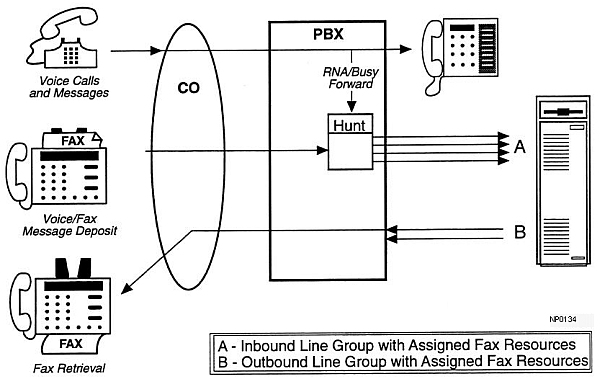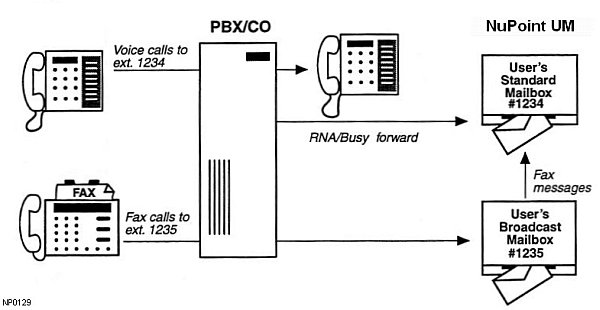
With the NuPoint Fax optional feature, outside callers can leave fax messages for mailbox owners just as if they were sending a fax to a fax machine. In most instances, callers believe they are dialing directly to a fax machine, and are not prepared to perform any special functions to deliver a fax. Therefore, for the fax mail application to be effective, the system must allow the callers to deposit faxes into the appropriate mailboxes without any unexpected requirements.
In most NuPoint Fax installations, mailbox owners have two mailboxes on the system. The first is their standard mailbox where they receive and play their messages. The second is a broadcast mailbox with walkaway fax enabled. This mailbox is transparent to the mailbox owner and automatically sends fax messages into the mailbox owner’s standard mailbox upon message receipt, as shown below. The reason for the broadcast mailbox is to allow mailbox owners to publish a telephone number where callers can send a fax directly to them. This second number goes directly to the broadcast mailbox without first ringing at any telephone. This allows for a situation that is familiar to both the caller and the mailbox owner.

There are several ways that callers sending faxes can be routed to the correct mailboxes. These include DID routing, Switch Integration routing, Switch Tie Trunk Integration routing, and General Access. It is possible to combine two or more of these methods to meet user needs and cost requirements.
Note: The primary purpose of the call routing scenarios in this chapter is to show possible switch connections. There are many ways to configure line groups and assign fax resources. Fax resources can be dedicated to a single line group or shared by inbound and outbound line groups.
The simplest routing method is to connect a second NuPoint Fax-equipped inbound line group to DID trunks directly from the CO. In this scenario, each mailbox owner that has fax mail capability is provided with a DID telephone number that allows a caller to deposit a fax message, or voice and fax message, into a broadcast mailbox on the system. Because the DID method involves additional trunks from the central office that bypass the PBX, it can be used in any switch environment. It does incur the expense of the DID lines and DID numbers for all users with NuPoint Fax capability.
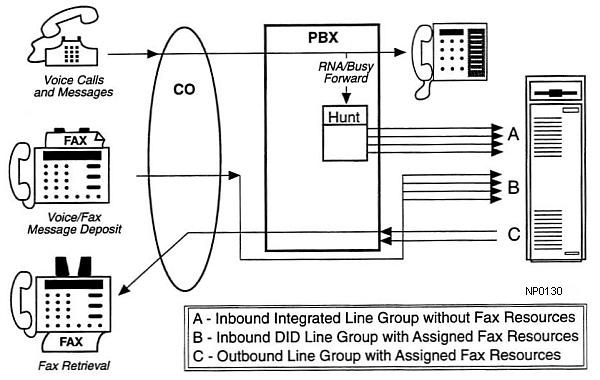
Fax Mail is supported by many of the PBX and Centrex integrations. Switch integration works the same way as DID fax call routing in that the caller is directed immediately to the appropriate mailbox. This method requires every person with Fax Mail capability to have a second DID number (both CO and PBX) that goes to a software-only phantom extension on the PBX. The phantom extension numbers must correspond to the broadcast mailbox numbers, and must be hard-forwarded to the NuPoint Voice pilot number. This method of fax call routing is shown below.
Method 1
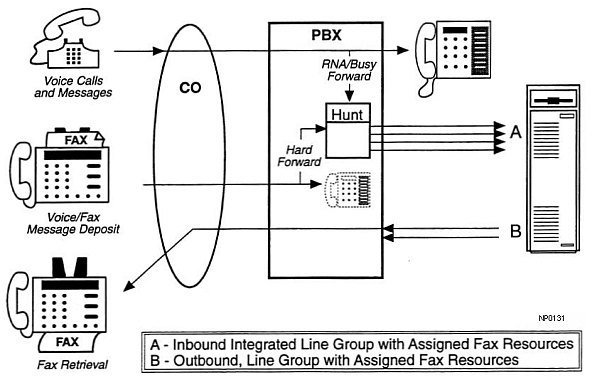
The advantage of this method is that fax calls are answered immediately by the desired party’s NuPoint Fax broadcast mailbox, and it does not require any trunks directly from the central office. However, it does require the expense of an additional DID number for each mailbox owner with fax capability.
Not all switches support a phantom extension capability. If your switch does not support this, then you must use another method. If your switch supports multiple in-bound line groups, you can use the second method of switch integration.
Method 2
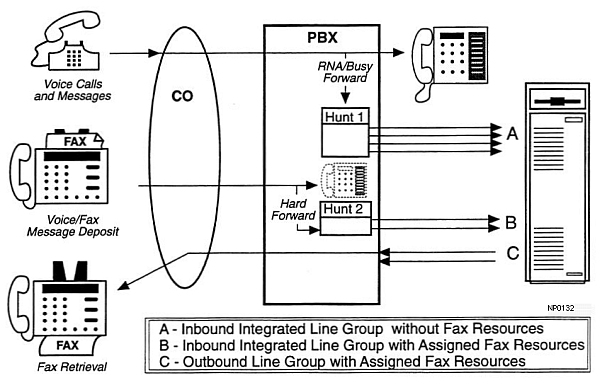
This method utilizes the tandem switching capabilities of many PBXs. If the integration routing method is not supported by your switch, this method still allows you to use a line group to the switch from the CO, but could require additional cards in the PBX. This method also requires everyone with fax capability to have a second DID number from the CO.
When the switch receives a call on one of the DID lines, it passes the call and its related information to the NuPoint Unified Messaging server over a set of TIE trunks. The call information allows the server to connect the caller to the appropriate mailbox.
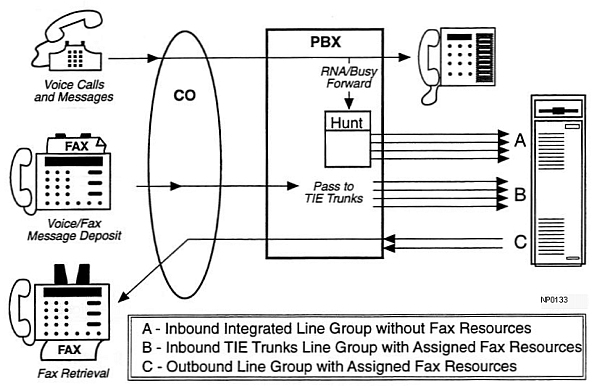
One disadvantage of TIE trunk integration is that many PBXs do not allow callers to transfer on TIE trunks. If most of the calls on these trunks are fax calls though, few callers need to transfer.
The alternative to DID or switch integration routing is to have a single fax message number that, upon answering, requests that the caller enter the mailbox number of the party who will receive the fax. The figure below shows these calls routed directly to the inbound line group. The advantage of this access method is the security and screening that it offers, since only those who know the mailbox number can access it. This method is available on any PBX or key system with no special hardware or software requirements.
